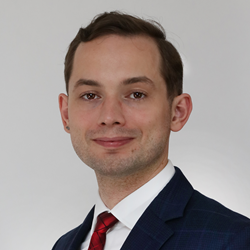ESTRO 2025 Congress Report I Brachytherapy track
Each year, the ESTRO annual congress serves as a cornerstone for advancing the field of radiation oncology. It fosters a vibrant platform for networking, knowledge exchange, and interdisciplinary collaboration. As in previous years, many of the 2025 lectures were focused on the important and effective, yet often underrated, invasive aspect of radiotherapy delivery that is referred to as brachytherapy. Within this track, the prostate cancer component brought together radiation oncologists, medical physicists, and radiation therapists to share experiences, discuss emerging trends, explore the latest advancements, and—perhaps most importantly—exchange practical insights and forge collaborations. In this report, we aim to summarise the key presentations and discussions from the prostate brachytherapy sessions, highlighting the clinical, technical, and research developments that underscored the track’s emphasis on experience-sharing and multidisciplinary networking.
The brachytherapy track kicked off with a general panel discussion on brachytherapy hosted by Peter Niehoff. This was directly followed by a session on “Strategies for dose accumulation in brachytherapy”. This topic was discussed by Taran Paulsen Hellebust and Joakim Jonsson, and considered particularly the interplay between external beam radiotherapy (EBRT) and brachytherapy dose accumulation, including prostate cancer treatments. Later that day, prostate brachytherapy was discussed by Frank-André Siebert during the GEC-ESTRO Assembly, in terms of ongoing projects and future outlooks. Magdalena Stankiewicz gave an exciting talk on the possibilities of combining brachytherapy and immunotherapy in the context of urological cancers. This is a hot topic that is supported by the hypothesis that hotspots in brachytherapy dose delivery might induce autoimmunisation to complement systemic immune therapy.
On the next day, with Vratislav Strnad, I had the pleasure of hosting a dedicated session in which brachytherapy was discussed as a boost for prostate cancer in the modern era of radiation therapy. In the first talk, Professor Siebert discussed the dosimetry of brachytherapy boost: low vs. high-dose-rate (LDR versus HDR), and various biologic and technical aspects thereof. In the second talk, Mario Terlizzi considered directions for brachytherapy boost, such as the current state of utilisation of this technique and opportunities for improvement. During the third talk, David Buchser Garcia summarised the rationale, evidence for clinical benefit, and patient selection criteria for brachytherapy boost. Finally, Danique Barten discussed the use of artificial intelligence in prostate brachytherapy treatment planning and delivery.
Another session comprised both breast- and prostate cancer-related topics. It included interesting talks by Hans Chung on a prospective study of MR-assisted local-focal-salvage HDR brachytherapy, one by Alai Goñi Ramirez on long-term outcomes of a study in which LDR- and HDR-prostate brachytherapy were compared, and one in which Ioannis Androulakis explored electromagnetic-tracking-based implant reconstruction in intraoperative prostate HDR brachytherapy. The session on brachytherapy use in cancer re-irradiation included a prostate-focused talk by Alfonso Gomez-Iturriaga. Further insights could be found during the “Physics brachytherapy” session.
The next day, two more sessions were clearly of interest to those focused on prostate cancer brachytherapy. The “Brachytherapy 2” session hosted two particularly interesting prostate-related lectures: one by Amani Chowdhury, who discussed a retrospective analysis of predictors of outcome for focal HDR salvage prostate brachytherapy; and the other by Ben Vanneste, who continued with a lecture in which he summarised outcomes of a two-centre study on this treatment method. In the “Brachytherapy 1” session, which in fact took place later, Alai Goñi Ramirez reflected on long-term outcomes of LDR brachytherapy plus EBRT, and the influence of androgen deprivation therapy. Finally, Wiwatchai Sittiwong summarised outcomes of a multicentre retrospective analysis of single-fraction HDR monotherapy for localised prostate cancer.
As always, ESTRO 2025 created a vibrant atmosphere for collaborators, colleagues, and friends to indulge in the stream of the latest research data in the field of radiation oncology. There was an interesting palette of lectures for those interested in prostate cancer brachytherapy, but to be fair, it would be difficult to find an interest within the field of radiation oncology that was not well represented. It was a pleasure to participate and to contribute, and I look forward to the next event in Stockholm in 2026!

Marcin Miszczyk
Department of Urology, Comprehensive Cancer Centre, Medical University of Vienna, Vienna, Austria;
Collegium Medicum - Faculty of Medicine, WSB University, Dąbrowa Górnicza, Poland